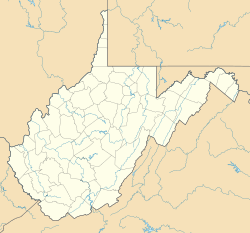Mace, West Virginia facts for kids
Quick facts for kids
Mace, West Virginia
|
|
|---|---|
| Country | United States |
| State | West Virginia |
| County | Pocahontas |
| Elevation | 3,396 ft (1,035 m) |
| Time zone | UTC-5 (Eastern (EST)) |
| • Summer (DST) | UTC-4 (EDT) |
| Area code(s) | 304 & 681 |
| GNIS feature ID | 1555021 |
Mace is a small, quiet place in Pocahontas County, West Virginia, in the United States. It's known as an "unincorporated community," which means it doesn't have its own local government like a city or town. Instead, it's part of the larger county. Mace is located along two important roads, U.S. Route 219 and West Virginia Route 55, about 16.5 miles (26.6 km) north-northeast of a town called Marlinton.
Contents
About Mace, West Virginia
Mace is a small community nestled in the beautiful mountains of West Virginia. It's not a city or a town with its own mayor or police department. Instead, it's an "unincorporated community." This means it's a group of homes and perhaps a few businesses that are part of a larger county.
What is an Unincorporated Community?
Imagine a neighborhood that isn't officially part of a city. That's kind of what an unincorporated community is. People live there, but they rely on the county government for services like roads, schools, and emergency help. It's different from a city, which has its own local government and rules.
Where is Mace Located?
Mace is found in Pocahontas County, which is a large county in the eastern part of West Virginia. The area is known for its stunning natural beauty, including forests and mountains. Mace sits right on two main roads: U.S. Route 219 and West Virginia Route 55. These roads help connect Mace to other places in the state. It's also not far from Marlinton, which is the county seat of Pocahontas County.
How Mace Got Its Name
The community of Mace was named after a local family who lived in the area. Many small towns and communities in the United States get their names from important families, early settlers, or unique features of the land. This tradition helps keep the history of the area alive.



